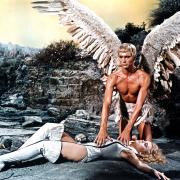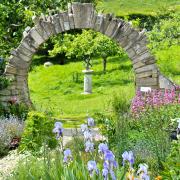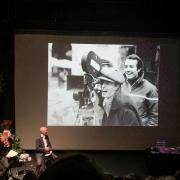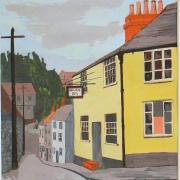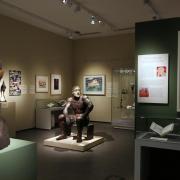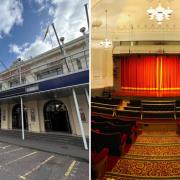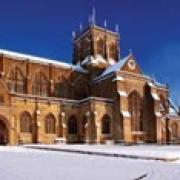Records of marriage, along with birth and death, mark key milestones in our ancestors’ lives and can often provide an insight into your family’s history
The civil registration of births, marriages and deaths came into force in England and Wales on 1st July 1837, following the passing of the Civil Registration Act of 1836. Before that date there was no official requirement to notify anyone of births and deaths, and the only legal marriages were those performed in a parish church by an Anglican minister, or those solemnized by the Society of Friends (Quakers) and Jews.
Under the terms of the Civil Registration Act, however, a single-tier registration system was introduced, based on the administrative Poor Law unions. These became the registration districts. All births, deaths and marriages now had to be registered accordingly, and each quarter (March, June, September and December) returns were sent to the newly-established General Register Office (GRO). The new legislation also permitted marriages to be performed in Register Offices, and authorised nonconformist sects, such as the Methodists, Baptists and Roman Catholics, to register their buildings for marriage ceremonies.
Finding a certificate
In order to obtain a copy of the certificate you require, you will first need to consult the GRO index to find the relevant reference number. These indexes were once housed at St. Catherine’s House in London and had to be searched manually, but copies are now widely available online. Most of the mainstream subscription websites, such as ancestry.co.uk and findmypast.co.uk, have published the indexes as part of their datasets, enabling you to search for entries by name, date and place. However, it is possible to view transcripts of some of the indexes for free at freebmd.org.uk, which boasts a similar search facility.
Marriage registrations are indexed twice under the surnames of both bride and groom, although from the first quarter of 1912 the surname of the spouse is shown against each entry, making it somewhat easier to locate the correct record. It is also worth remembering that the place listed in the GRO index refers to the district in which the event was registered, and not necessarily the town in which it occurred. Some registration districts near the county border, such as Sherborne, may have included parishes from a neighbouring county, whilst other places, such as Bournemouth and Christchurch, shifted altogether according to boundary changes. It is therefore worth checking ukbmd.org.uk/genuki/reg for a comprehensive list of all English and Welsh registration districts and their dates of operation.
Once you have found a relevant entry in the index make a note of the date, registration district and GRO reference (page and volume number), as these will enable you to order a copy of the original certificate. The certificates can either be obtained directly through the GRO by completing the online application form at gro.gov.uk (the current fee is £9.25 per certificate), or by contacting the appropriate register office for the district in which the event took place (fees vary). It usually takes about a week for the certificate to arrive when ordered through the GRO.
If you are unable to find an appropriate entry in the index, remember that both the original and transcribed records do contain errors so try broadening your search terms and checking under different spelling variants. Many people swapped their forename and middle name(s) at some stage during their lifetime, whilst others dropped their middle name(s) altogether, so be sure to cover all eventualities.
Details revealed
The marriage certificate contains a wealth of information for the genealogist. As well as recording the date and place of marriage (be it church, chapel or register office), the document also details whether the ceremony was performed after banns, licence or certificate, and by whom. The names of the bride and groom will be shown in the column on the left with their respective ages (although sometimes the actual age may be replaced with the term “of full age”, which simply means 21 years or over), together with the pre-marital status (bachelor, spinster, widow, and so on) of both parties.
The couple were also required to give their occupations and residences at the time of marriage. Be wary of cases where the addresses are the same, as it does not always mean that the bride and groom were already living together. Giving one address had an advantage, since it meant that the couple did not have to pay for banns to be called in two different parishes. Similarly, care should be taken as far as occupations and ages are concerned, as some chose to embellish their rank or alter their ages at the time of their marriage for a whole host of reasons.
The certificate should also provide you with the name and occupation of the fathers of both parties, which can be especially helpful in tracing back another generation. In some cases the father may be listed as ‘dead’ or ‘deceased’, while at other times these columns are simply left blank. This may indicate that the bride or groom was illegitimate and did not know the name of their father. The document will also include the signatures of the witnesses - at least two people of ‘credible age’ (over 14 years old) – which can also be useful for your research, as they often turn out to be close family members.
Taking your research further
If you are attempting to locate a marriage which took place prior to the introduction of civil registration, you will need to consult the records for the relevant parish. These will typically be found in the appropriate county record office or local archives. Those for Dorset can be viewed at the Dorset History Centre in Dorchester, although you may wish to contact them before your visit to check they hold the records you require (dorsetforyou.com/dorsethistorycentre).
Most of the Dorset parish registers have now been digitised and are available at ancestry.co.uk. You will need to purchase a subscription to search the records from home, but the website can now be accessed for free at the Dorset History Centre and in most public libraries. Some transcripts of Dorset records have also been published online at findmypast.co.uk.
***
Luke Mouland is a professional genealogist and hisorian. He runs the website Kith and Kin from his home near Sherborne. Find out more at kithandkindresearch.co.uk.
***
A Bill for a Wife
The following ‘lonely hearts’ ad was placed in the Dorset County Chronicle in July 1832: “Charles Warren, of Marnhull, Dorset. My house is my own, and have no rent to pay. I have an acre of potatoes, half blues and half whites, this year. My wife has been dead 12 months ago, last Shroton Fair – the children live with themselves in the day-time, but I am always at home with them at night. I do think that it would be better if there was a woman to look after them, both for the children and myself. I have got 8s a week for my work, and the boy 2s a week, and have constant employ. I want a good steady woman, between 30 and 40 years old, for a wife. I do not want a second family. I want a woman to look after the pigs while I am out at work.”
***
READ ON
• Where to start when tracing relatives and the meaning behind some Dorset surnames - It’s fascinating tracing relatives but where do you start? In a new series genealogist Luke Mouland provides useful tips and turns up some interesting Dorset names.
• Tracing the fate of pauper ancestors in Dorset - Before the founding of the British welfare state, families that fell on hard times often ended up in the local workhouse. Thanks to meticulous record keeping the fate of your pauper ancestors in Dorset can easily be traced.
• How photographs in uniform can provide clues about the role ancestors had during the Great War - Many husbands, fathers, fiances and sons going to war had their photograph taken in uniform. These poignant mementoes can provide vital clues about the role your ancestor had during the Great War.






